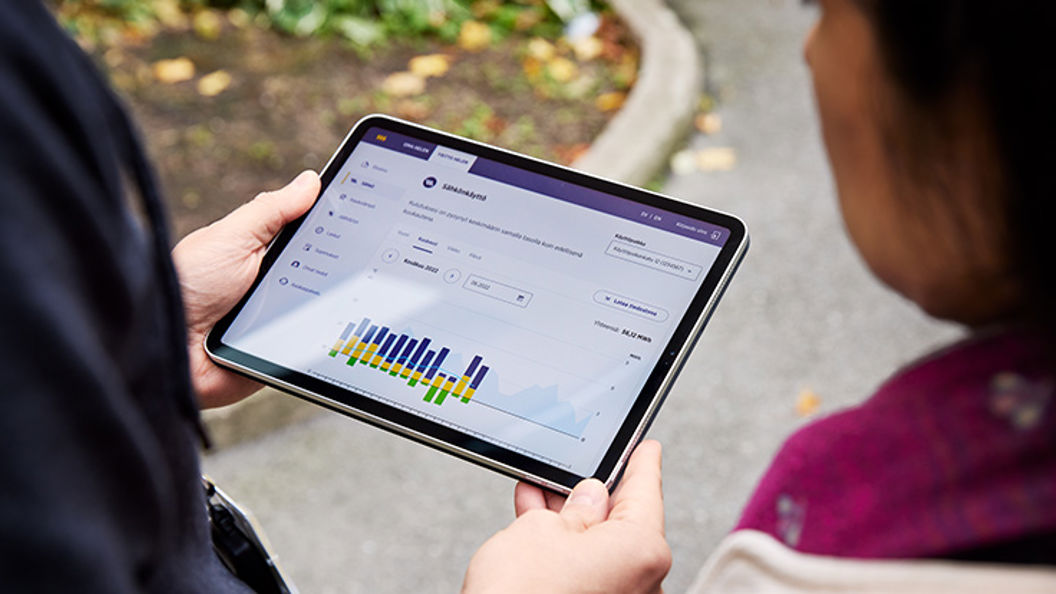
District heat in a housing company
Are you building a new house or changing your heating system? Or maybe you would like to update the energy efficiency of your current district heating system or change the heating to be carbon neutral? On this page you will find further information about Helen’s district heat.
Why district heat?
District heating brings comfort. It is a stable, carefree and reliable heating solution that is suitable for all types of properties. The use of district heat is simple. The life cycle of the equipment is long, and it does not need much maintenance. With district heat, you can heat the indoor spaces and service water of your property. There is always enough district heat in all weather conditions, and the amount of hot water adapts to the needs of the housing company. District heating is a sustainable heating choice in an urban area.
- Helen’s security of district heat supply is among the best in the world.
- District heat has many uses. It is possible to have an energy-efficient water-circulated underfloor heating in houses with district heating. In addition, district heat keeps paths and yard decks free of snow and ice in the winter.
- District heating is suitable for both new and old properties, and it operates reliably together with other heating forms and energy efficiency solutions.
Frequently asked questions about district heating
Helen’s district heat becomes carbon neutral
In 2023, we will close the Hanasaari power plant and halve the use of coal. In 2024 we will phase out the use of coal at the Salmisaari power plant, after which our production will be completely carbon-free. Production will be replaced with energy storage, waste heat, bioheat, and solar and wind power.
Already now our customers can turn their current district heat carbon-neutral or emission-free with the supplementary services in district heat.
District heating products
Monthly Heating Property
When the current district heating product is renewed 1.1.2024, housing company and business customers will have their own product, Monthly Heating Property. Tracking heating costs is now easier because the price of Monthly Heating Property is billed monthly. The price consists of a fixed basic fee determined by the consumption data of the last three years and an energy fee that is updated in January and July for a year at a time.
Fixed-price District Heating
Manage your budget reliably with a three-year fixed-term, fixed-price district heating contract. Fixed-price District Heating is designed for Helen's corporate and housing company customers, and brings clarity and predictability to heating bills. The price consists of the fixed basic fee and fixed monthly energy fee that remain unchanged for the entire three-year contracting period.
Eco Heat Flow
By upgrading the property’s heating to Eco Heat Flow, you reduce the property’s carbon footprint in a concrete way and contribute to the production of local, zero-carbon energy.
The origin of heat is certified with guarantees of origin for renewable heat and waste heat, granted by Energy Authority.
Eco Heat Bio
By upgrading the property’s heating to Eco Heat Bio, you reduce the property’s carbon footprint in a concrete way and contribute to local renewable energy production.
The origin of heat is certified with a guarantee of origin for renewable heat granted by Energy Authority.
Stages of acquiring district heat
The customer requests a budgetary or binding offer on a district heat connection.
The customer’s HVAC designer submits the technical plans to Helen for inspection, on the basis of which Helen makes a binding offer on a district heat connection and sends it to the customer for approval.
After the customer has accepted the offer, we will start planning the building and implementation of the connection according to the customer’s preferred time schedule. The connection will be ready in about 68 weeks from accepting the offer.
In addition to the district heat connection, you must acquire and install a heat distribution centre for district heat. In the heat distribution centre, the thermal energy of the district heating water is conducted to the water circulating in the property’s heating circuit and domestic hot water.
Our experts take care of the functioning of the design and implementation of your equipment by inspecting the technical plans and carrying out the commissioning and final inspections on site.
After the district heat connection has been built and the district heat substation is found to be safe and operational, the heat supply can be started.

